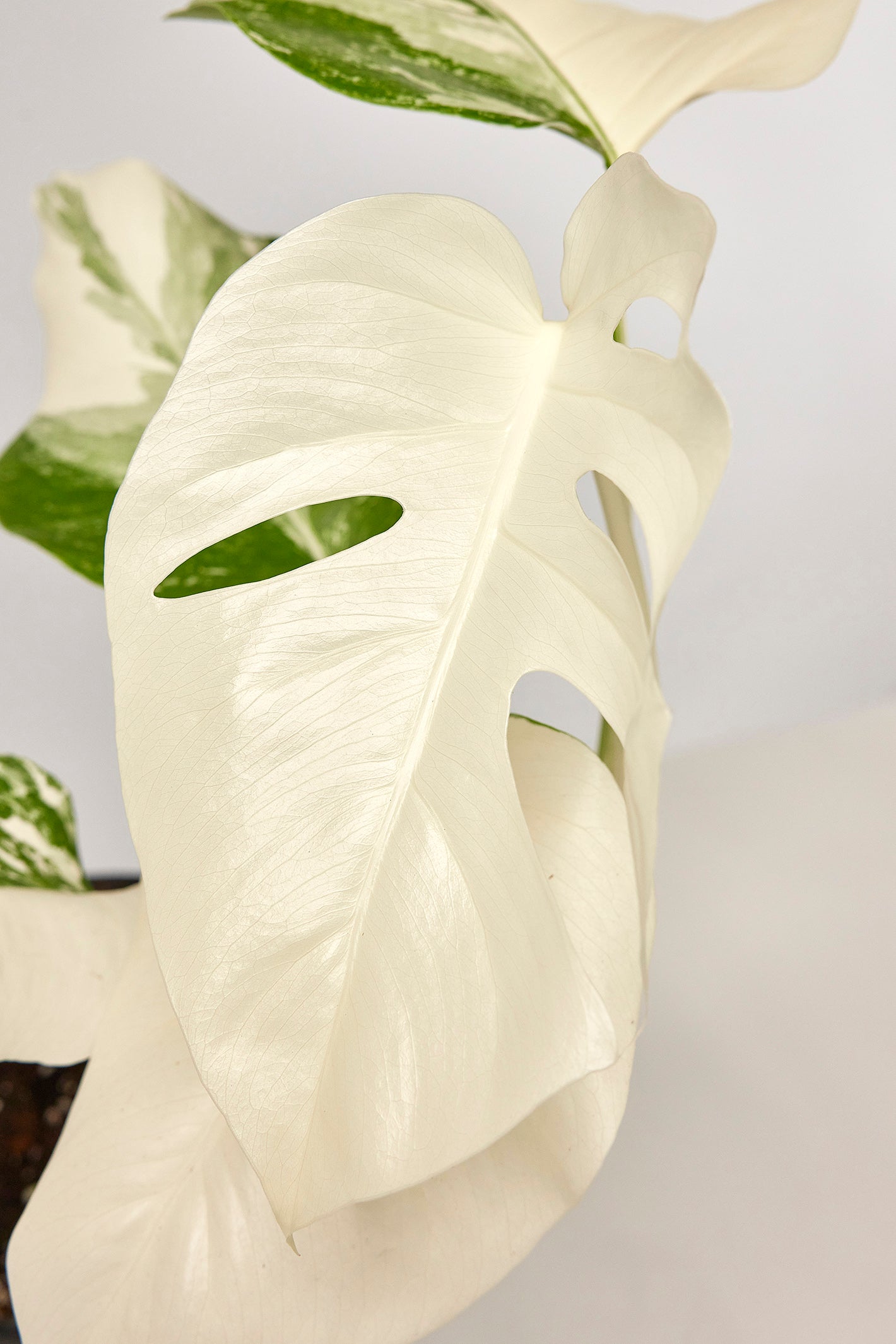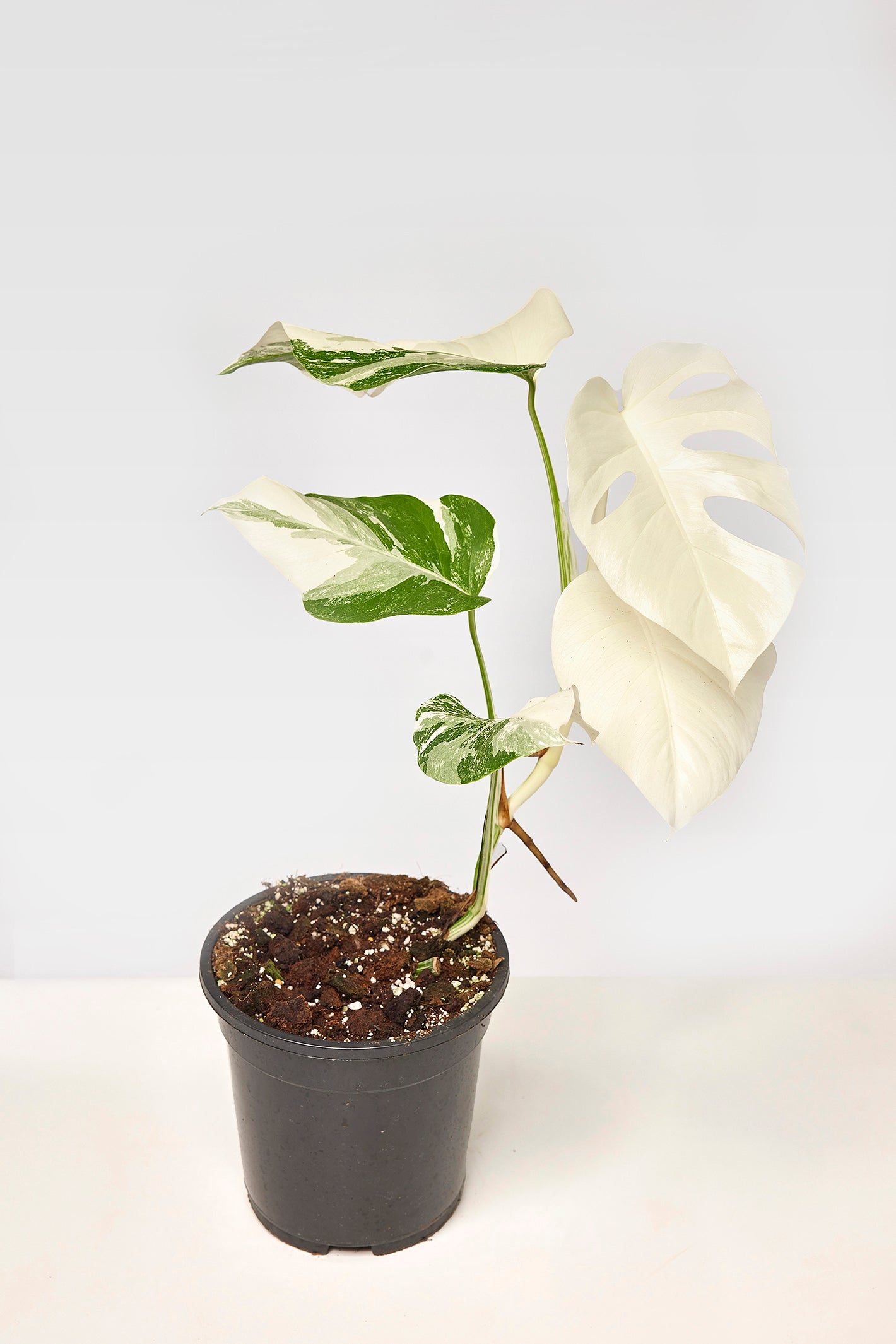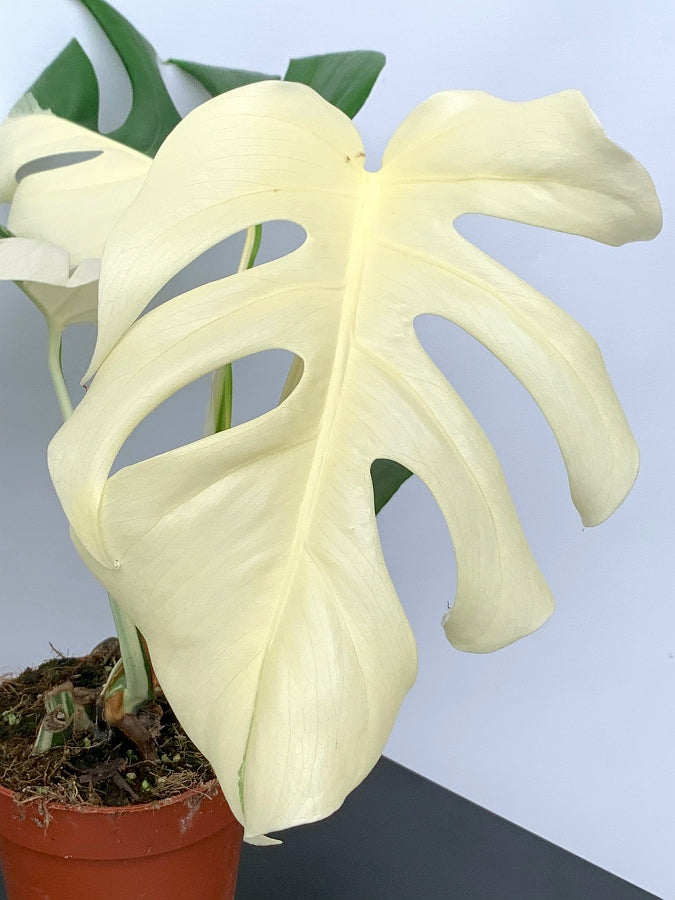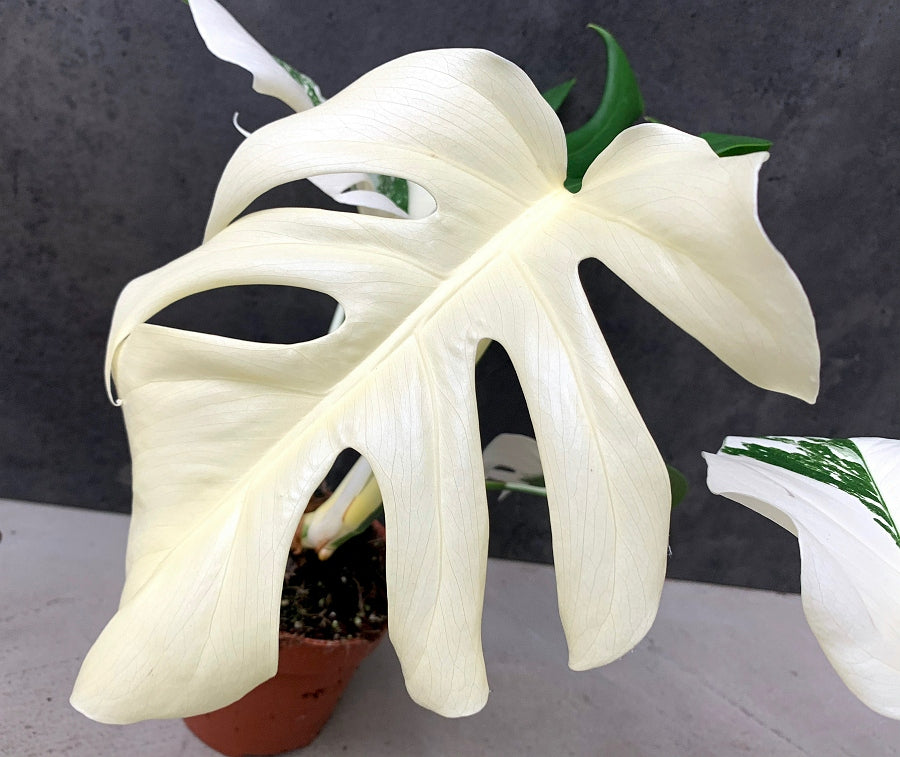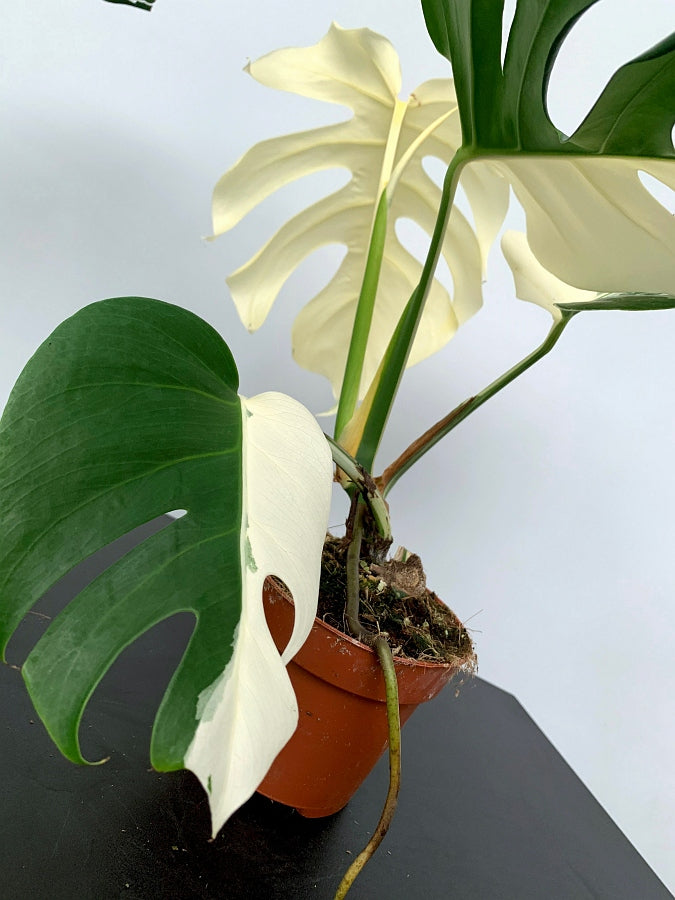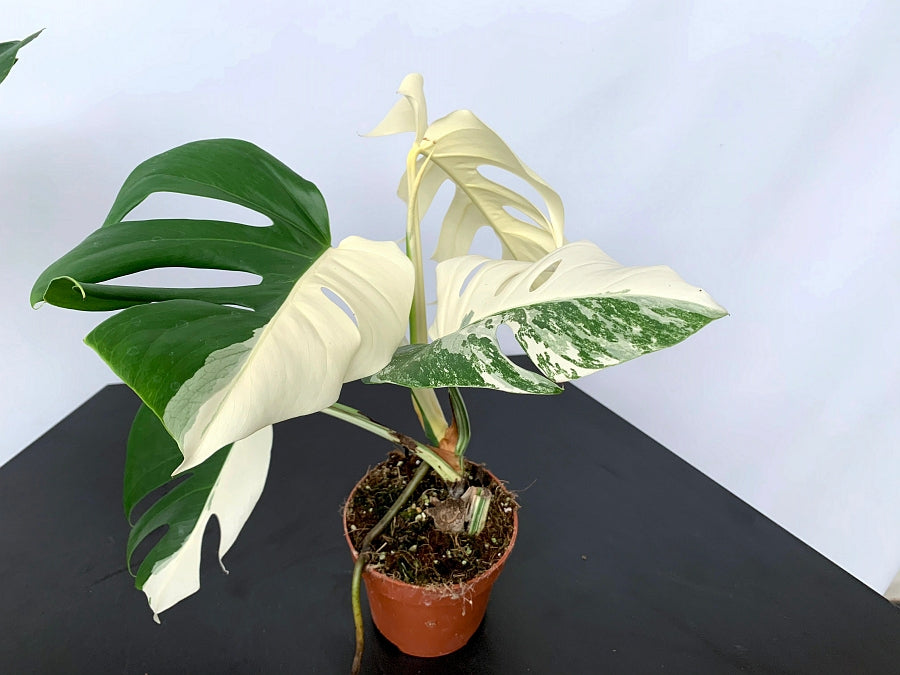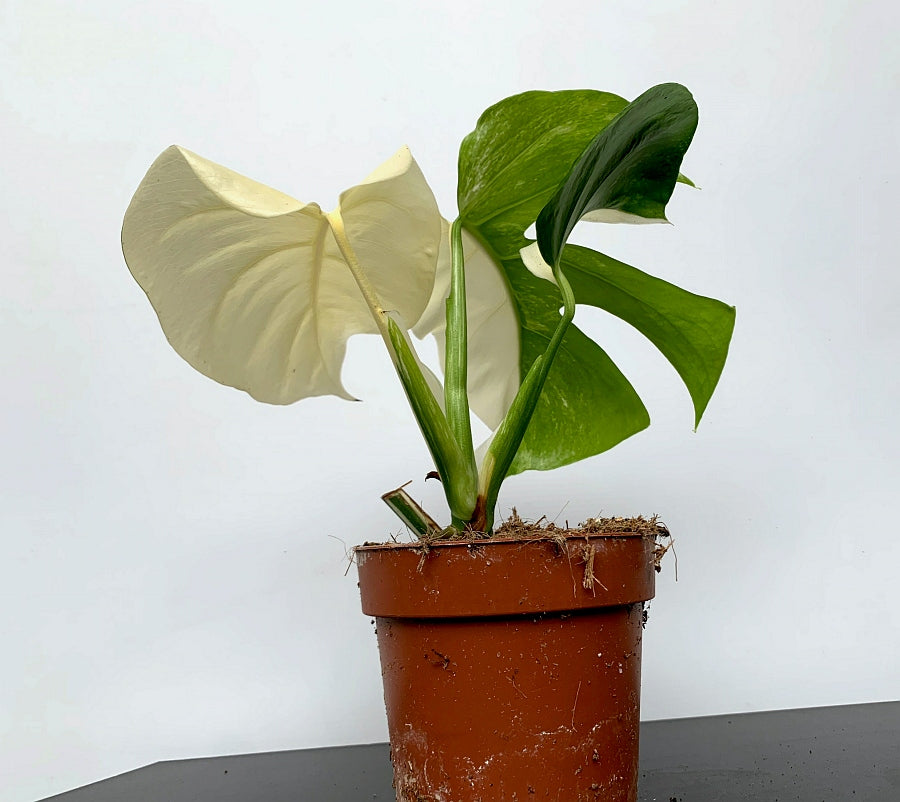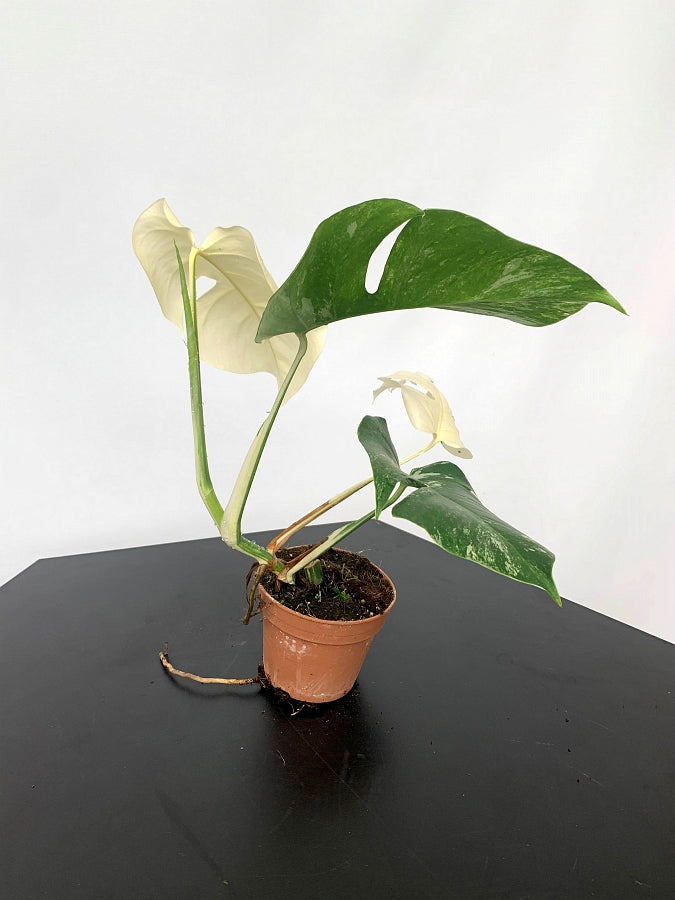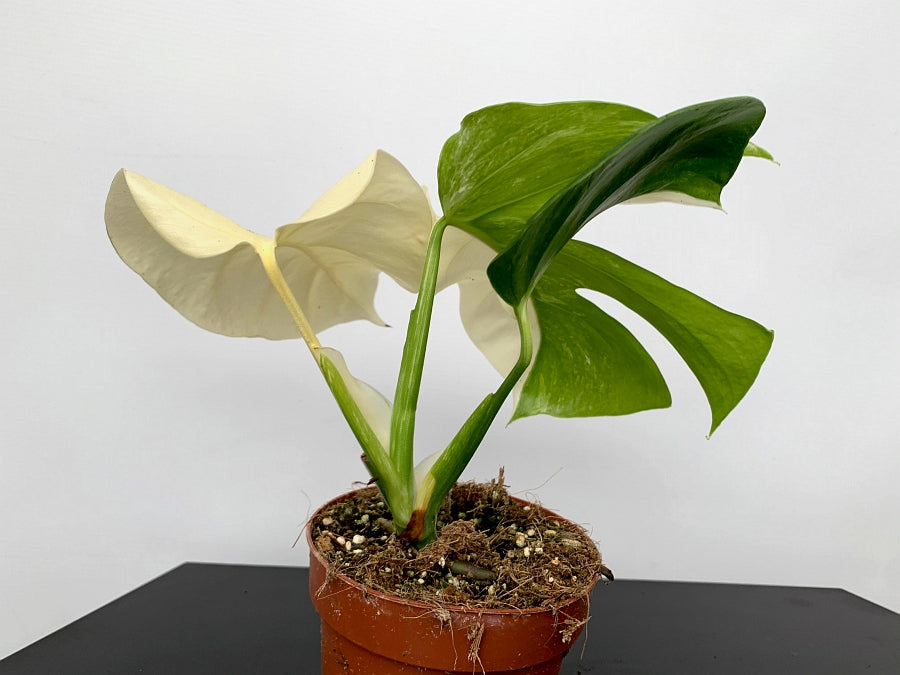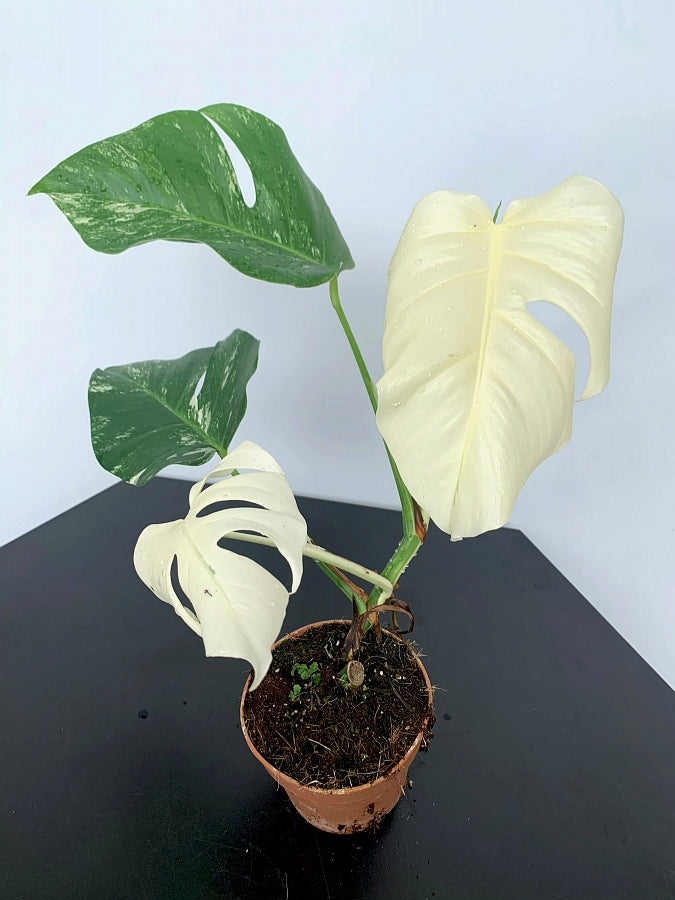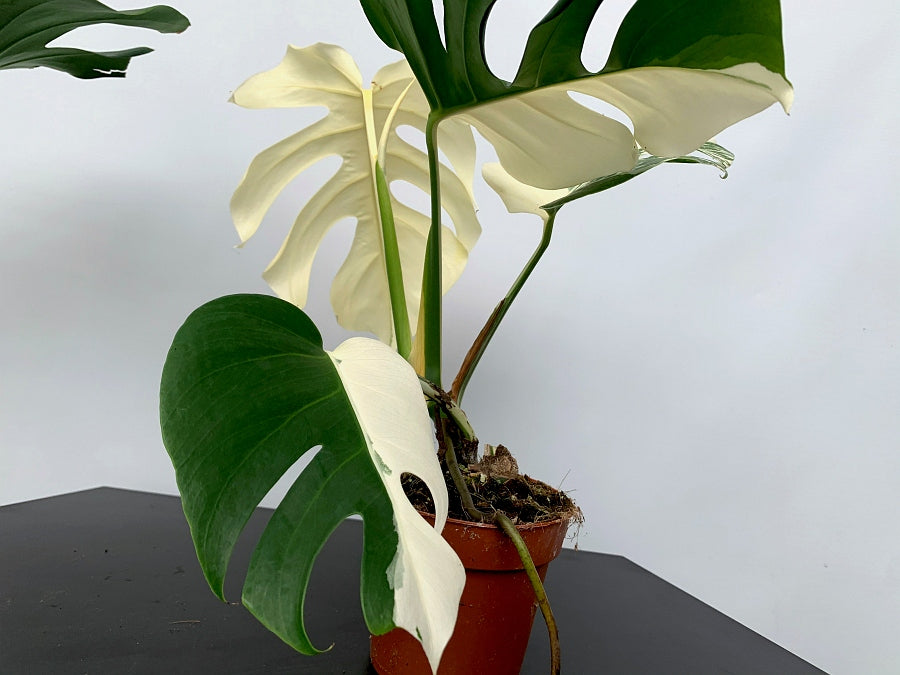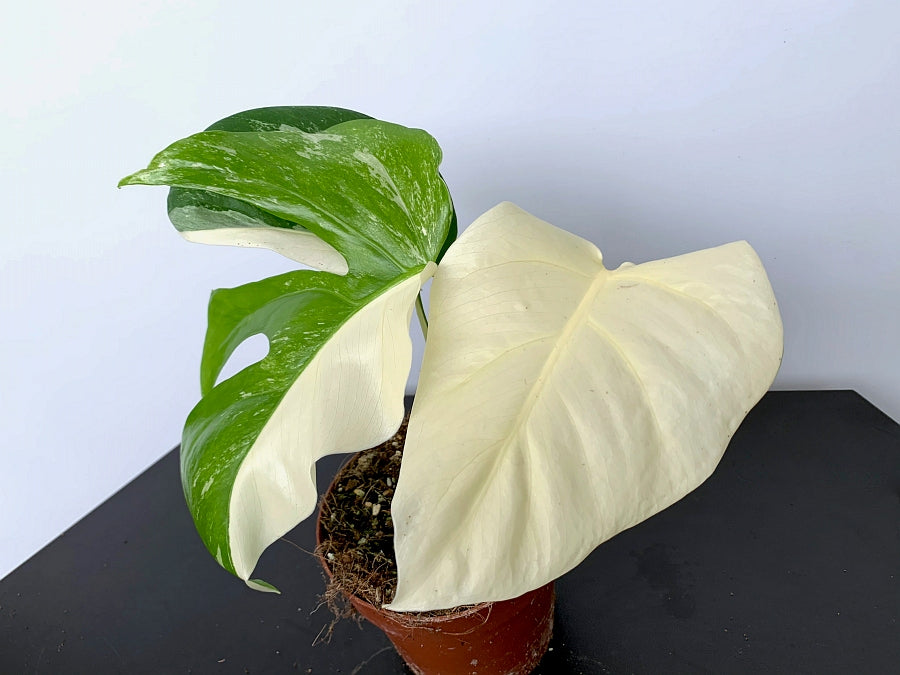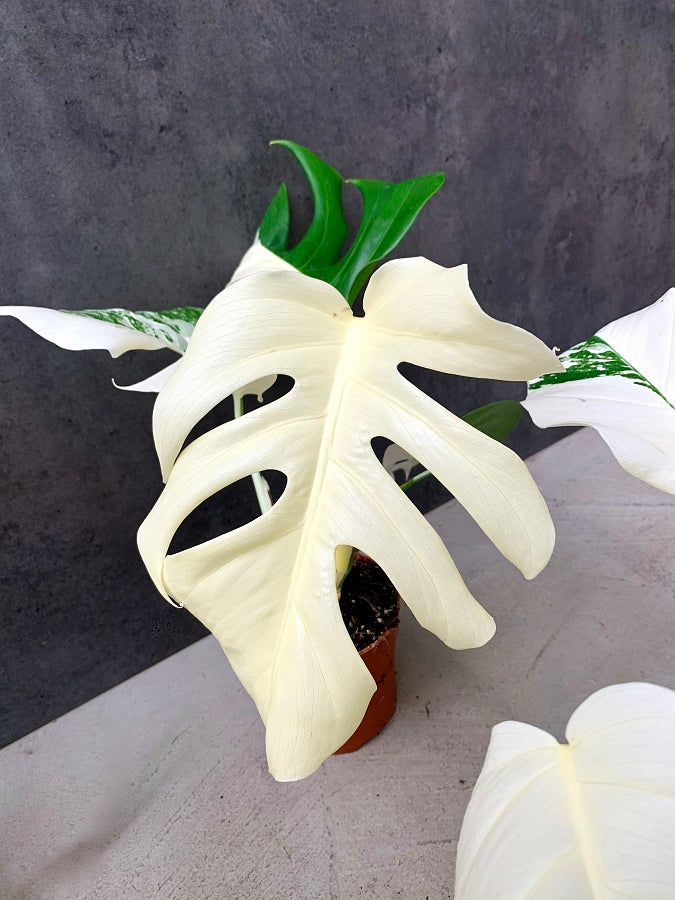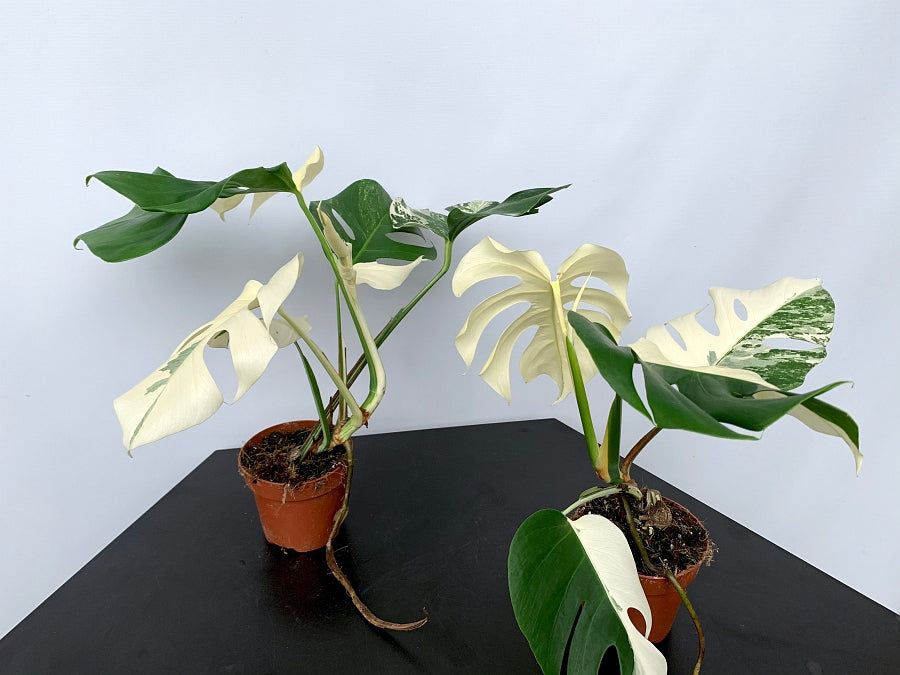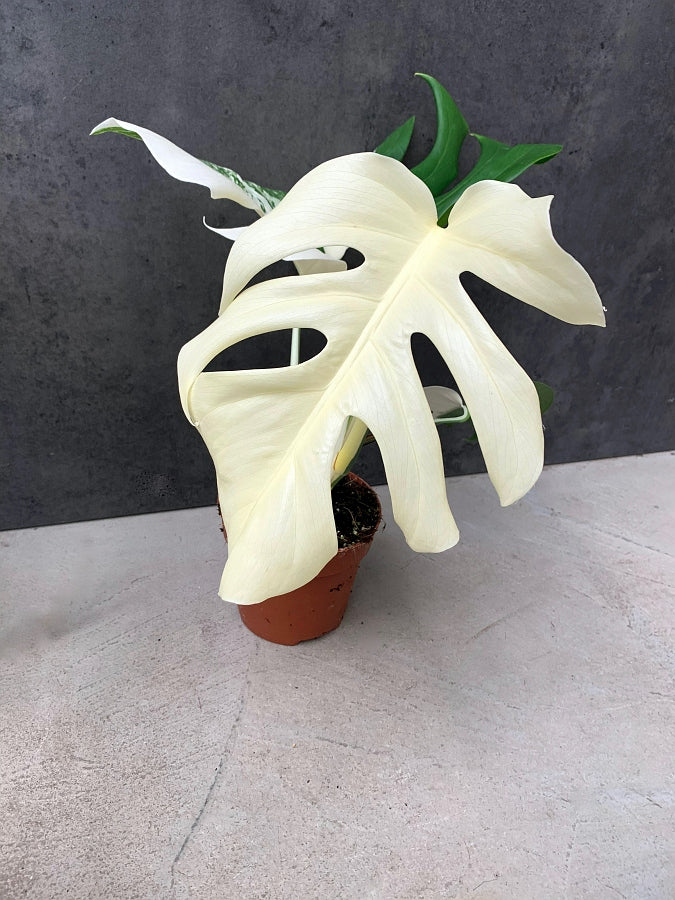The Monstera deliciosa variegata albo is a very special plant that is still wildly popular. Each leaf has a different pattern, giving each plant a unique appearance. Over the years, this houseplant has gained a lot of fans because of the way it continues to surprise with each new growth. In the wild, the green version can reach a height of 20 feet by climbing up trees. Using a moss pole will also help its growth since it is a plant that likes to climb. Allowing it to climb also increases the chances of this plant making large leaves. In addition, it is then easier to grow the plant into the desired shape.
Mean and variegated spots
Monstera means 'monstrous' or 'abnormal' and deliciosa means 'deliciousness,' because of the beautiful large leaves this plant can get. 'Albo' stands for the white spots in the leaves, which this species has acquired due to a mutation in its DNA. Because of this mutation, this plant produces less to no chloroplasts locally, which gives the leaves lighter spots there. In the absence of chloroplasts, the leaves become white.
Full Moon
The patterns of variegata are largely random. But if there is a lot of variegata in the stem, chances are that leaves will emerge from it with even more white in them. When there is no more green in the leaf, we call it a "Full Moon" leaf. This leaf is uniformly white, which many people think looks special and unusual. Because many hobbyists are looking for a special look in the Monstera deliciosa variegata albo, we also offer these varieties separately.
Care
Starter plant
The Monstera deliciosa variegata albo is a hole plant with white spots that is relatively easy to care for despite the spots in the leaves. Therefore, it is a suitable beginner plant for people who already have some experience with easy tropical plants.
Leaf chlorophyll and sunlight
Nevertheless, the variegata in the leaves does make the plant a bit more sensitive than the green variety. Because chloroplasts take care of photosynthesis (converting solar energy and carbon dioxide into nutrients for the plant), the local lack of these cell organelles means that the plant here may have trouble getting enough energy to grow well and stay healthy. But the white part of the leaf is also more susceptible to burning. Therefore, it is important that you put the plant in a place where there is plenty of sunlight during the day, but that this light is well filtered through window coverings, for example.
Watering
The Monstera deliciosa variegated albo likes clean water (preferably rainwater at room temperature). In doing so, the plant may dry out slightly before another watering. However, make sure the substrate does not stay wet for too long, as this houseplant does not like wet feet. During the growing season, a small amount of houseplant food may be added.
Care in the living room
Humidity
In addition, the Monstera deliciosa variegata albo is an excellent plant to be kept in the living room, as it can also grow well at fairly normal humidity (50%-75%). Just be sure to avoid drafts and air conditioning with the plant. Air conditioning can dry out the air too much for a plant. A fan, on the other hand, can actually promote growth.
Temperature
What makes this plant even more suitable for the living room is the fact that they can stand well in 17-25 degrees Celcius. A few degrees cooler is also possible, but then you will see that growth will stagnate and the plant will have a little more trouble maintaining resistance.
Monstera borsigiana variegata albo?
In addition, there have been rumors that the Monstera deliciosa variegata albo also has a borsigiana version, which has a slightly different growth habit. However, there is no genetic difference between them. It is the same kind of plant, but in different circumstances it will have a different growth habit. When the plant is in a bright room with lots of indirect light and a good climate, it will tend to get nice, large leaves with lots of holes and compact leaves. So if the plant is growing with long stems and small leaves and instead you want to get large leaves, then it is time to look at its care.
Repot
This plant may be repotted when the roots completely fill out the pot. Then it is best to go for a Potsize of 3-4 cm larger. Because this plant roots very easily. In terms of potting soil, it is best to choose a well-draining mix of perlite, peat and coconut fiber. Usually, repotting once every 1 or 2 years will be sufficient. The growing season is best for this. If a lot of mineral-rich substrate is used, extra feeding can be stopped for a few months to prevent accumulation of minerals in the potting soil. Too much minerals can cause damage to the roots and unsightly spots in the leaves. A Monstera deliciosa variegata albo does not need much houseplant nutrition to do well.

